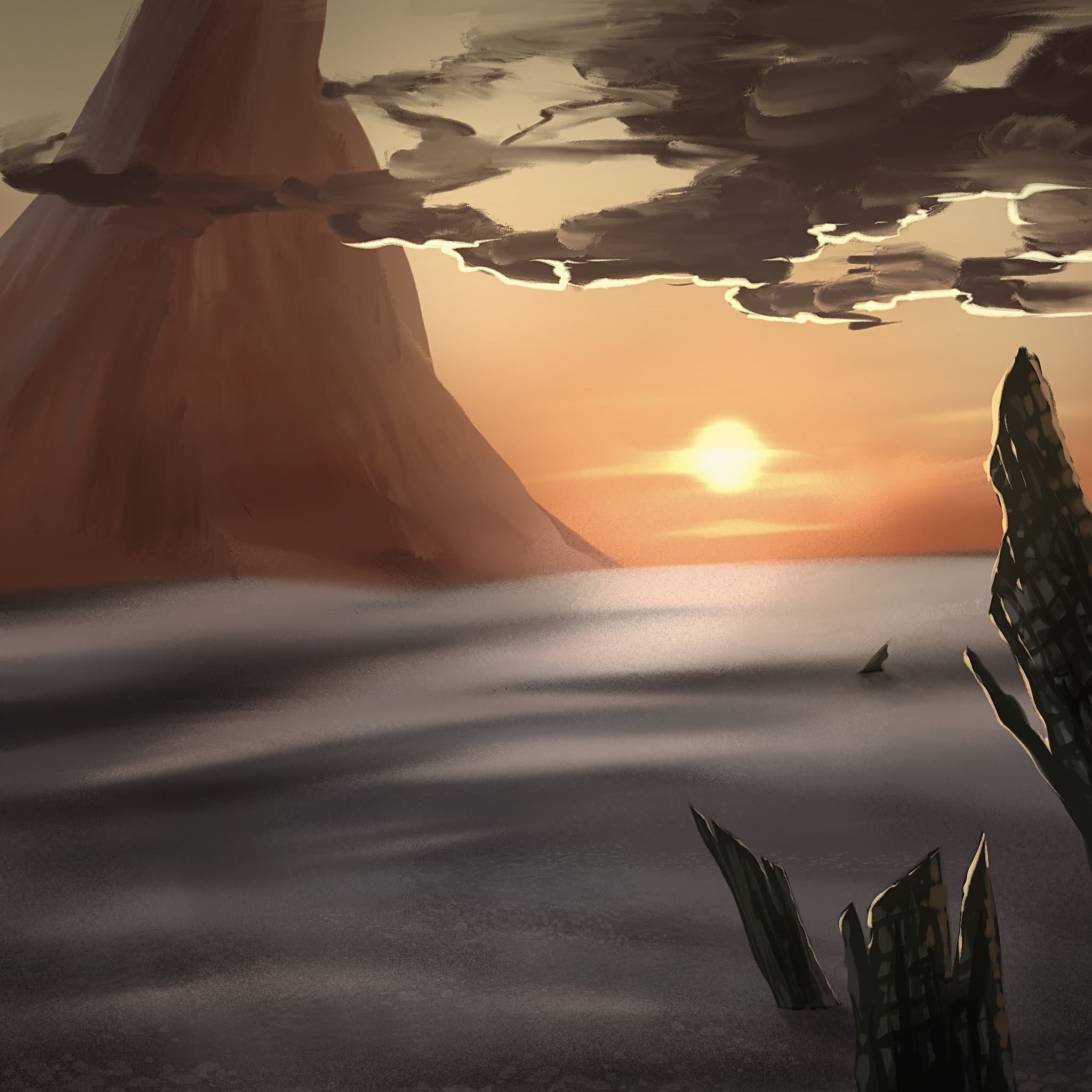Tokopedia
Go to Search
Koishi the Faceless-There have been various reports of a lumbering form that resembles a small akota coming to rescue hikers who find themselves stuck in the Ashen desert during the sudden rains that are known to happen. It's face is always obscured by the harsh rain or the clouds of ash. Locals who have long standing family ties to the region swear this is the spirit of an akota named Koishi who once lived in the desert, keeping others away for their safety.
The Chihakia is an old volcano, speculated to be somewhere between 200,000 to 250,000 years old. According to the researchers, it has been slowly erupting and spitting ash for the last 1,000 years.
While exploring the region is possible with the right equipment, the high danger levels require that those doing so exercise extreme caution.
Decades ago people once thought the ash held medicinal properties and would make pastes out of it. It has since been proven that the ash has no such benefits and instead people advise against it's usage because collecting the ash can lead to more danger than it's worth.
On the opposite side of the laboratory a large sectioned off dig site can be found. It's a newer development, but already there have been various discoveries that bring new understanding to the culture and history of Alurik such as preserved fossils and pottery.
Original location inspiration by eeve30 and evaeevee and
Location art by IoNekta
Ashen Desert
Alurik
The Ashen Desert is overcast and dreary almost year-round thanks to the loose ash being kicked up into the sky by the wind that never seems to stop. Rain is extremely rare here; despite the more humid areas around the volcanoes and mountains, the fields are extremely dry. Because of the floating ash, it's recommended to wear face protection if one is to be there for extended periods of time. Normally, the weather is exactly the same as a dessert, warm in the day and cool in the night. However, right before the volcano shows a lot of activity the magma flowing underneath will heat up the ground so that it's warm to the touch.
Description:
At a glance, the fields look like a sea of gray that can swallow someone's entire being. The overall feeling of this place is gloomy and melancholic. This 'desert' is located at the side of a volcano known as Chihakia, which is constantly blowing out ash. The large amounts of ash built up have created a sand-like layer covering the ground which resembles the large dunes of sand in a desert. These dunes have stopped any plant life from growing and the dust that fills the air drives away any animals that used to live there. When approaching the 'desert' all that can be seen is the grey covering the ground, the volcano on the horizon, and a small research building.Landmarks:
- Chihakia Volcano - A small composite volcano that the Ashen Desert resides under. This is the source of all the ash and soot despite being deemed dormant. It shows no signs of erupting anytime soon and provides a good hiking trail so long as proper protection from the air is brought.
- The Slip - The steepest side of the Chihakia Volcano is known as the Slip because of how steep and dangerous it can be during a rare rainfall. The rain mixing with the layers of soot can cause dangerous mudslides and take out anything with it. There is a relatively large build up of muddled soot and rocks about 100 feet from the Slip's base where the runoff comes to a stop.
- Burnt woods - While there is no actual plant life present in the Ashen Desert, there are remnants of the life that used to exist. The most prevalent of these are a group of massive burnt tree trunks that may have been part of a forest. The outer layer of the woods are burnt to a crisp and each tree is covered in ashes.
- Askan Laboratory - A large light blue building placed a quarter of the way between the desert and the volcano holds a small research center. Scientists have been highly interested in this area as volcanic ash is great at preserving fossils of the past and maybe serving as a clue to the fauna that used to inhabit Alurik. There have also been incredible discoveries of art and pottery found beneath the ash, suggesting that people probably lived here before. However, on top of research, this building also serves as a rescue center to take in any tokotas and people that may have wandered into the desert by accident. They have all types of masks and goggles to make sure that rescuers can go out safely and a small emergency room in case they find someone lost in the desert.
Lore:
Original location inspiration by eeve30 and evaeevee and
Location art by IoNekta

